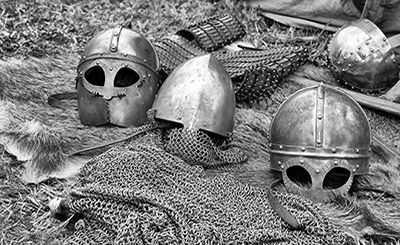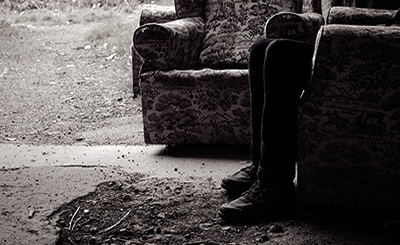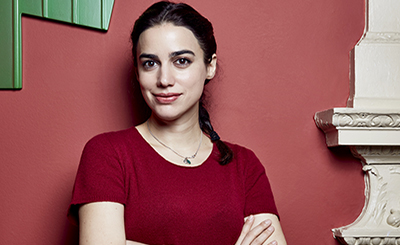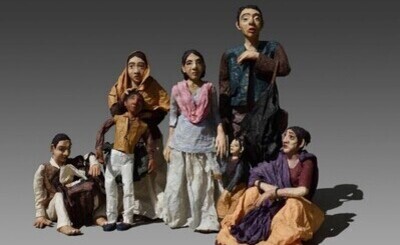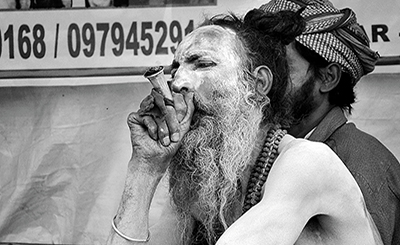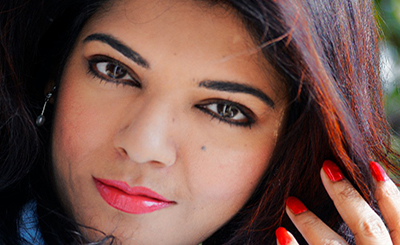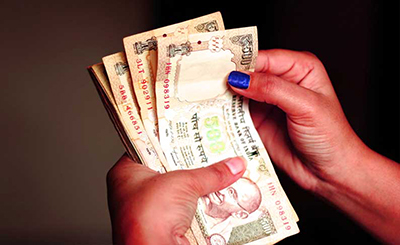
Emma Donoghue, author of The Pull of the Stars. Photo: Mark Raynes Roberts
“This flu was nothing like the familiar winter bane that snuffed out only the very oldest and frailest... This new flu was an uncanny plague, scything down swaths of men and women in the full bloom of their youth,” writes Irish-Canadian writer Emma Donoghue in her 13th novel, The Pull of the Stars (Pan Macmillan/Picador), set in the middle of the 1918 Spanish flu, which was released in the middle of the coronavirus pandemic. There are many echoes of today in the novel — streets being sprayed with disinfectants, the bodies of the dead piling up. Donoghue, 50, who had submitted the final draft of the novel when Covid-19 was declared a global pandemic, didn’t need to put any parallels with the present.
The pandemic may have whetted readers’ curiosity and helped the novel become a bestseller in all the four countries it was published in — Canada, Ireland, the US, UK — but Donoghue, speaking over Skype from her home in Ontario, Canada, says it was purely coincidental. She began the research for the novel much earlier — towards the end of 2018, the centenary of the Spanish flu. The Pull of the Stars — which was released much ahead of its schedule to make it resonate with the times, and which tells the story of three women healthcare workers in a cramped maternity ward at an under-staffed hospital in Ireland, in the backdrop of the First World War — has helped Donoghue pay an ode to the sacrifices of the scores of doctors, nurses and other medical staff in Ireland, and around the world, who have emerged as the warriors fighting the pandemic.
War novels, traditionally, have been dominated by men, mostly white, in the trenches. Donoghue attempts to subvert that tradition and shows us that women’s role in times of crisis, natural or man-made, throughout history, has been no less heroic. The Pull of the Stars, thus, is an alternative war novel — women in the battlefield of reproduction — which primarily concerns itself with the “heroic event” of childbirth in the time of the pandemic. When she was researching for the novel, Donoghue looked for a hook to the story and she found a little fact: women in late pregnancy tended to catch the flu and have worst symptoms. “I thought that was interesting because then, I could have two crises going on. The birth story will not be the same as the flu story. And they would be very interesting in combination,” she says. In the novel, the story of the pandemic and the pregnancy gets intermingled with the politics over both: the government being in denial about the extent of the pandemic and making half-hearted efforts to contain it, leaving the people to fend for themselves, just as it remains oblivious to the widespread poverty.
Over the three days during which much of the novel’s action takes place, Nurse Julia Power, Doctor Kathleen Lynn, and a volunteer helper named Bridie Sweeney struggle to save lives — of young women into their 10th or 12th pregnancies, “worn down to the bone” because of the grinding poverty. These women, many of whom are unlucky enough to produce two in a year, include: the spoilt and demanding Mrs Delia Garrett; utterly worn-out Ita Noonan; 17-year-old Mary O’Rahilly who is so childlike she thinks she’d be giving birth through her belly button; and the unmarried and devoutly Catholic Honor White, who believes the pandemic was God’s punishment for war.
Donoghue’s strength as a writer lies in the fact that she often tells the story through a strong narrative voice, like in the Booker Prize-shortlisted Room (2010), which was adapted for an Academy Award-winning film, and The Wonder (2016), a thriller. In The Pull of the Stars, it is Julia, the nurse, who is the narrator. She is single/unmarried at almost thirty and extremely good with her work. “She is very much typical of her generation because there were a lot of women around the time of the war who didn’t marry or didn’t marry after the war. I thought it would be fun if she was just turning 30 at a point where women who were 30 got the right to vote,” Donoghue says, adding that she developed Julia’s character in a way that she is able to “rise to the occasion” and suddenly show leadership in the end, even though she had been just “an obedient little cog” throughout the novel. “I tried to give her equal measure of skill and knowledge and a warm heart so that she could respond to her patients, and sometimes even break the rules,” she says.
For instance, when Delia Garrett, a wealthy Protestant, asks Julia her “Christian name”, the nurse knows that it is against protocol to share any personal information; she had been advised to “maintain gravitas by staying aloof”. But then, she considers this: “But these were strange times and this was my ward, and if I had to run it today, I’d do it my way. Not that it felt as if I were running anything, exactly; just coping, hour by hour.” And so Julia, eventually, answers Delia.
When Ita Noonan, only 33, comes in, down with flu, for her 12th delivery, Nurse Julia, caught between the dead and the dying, has to remind herself: “My job wasn’t to cure all Ita Noonan’s ills but to bring her safe through this particular calamity, I reminded myself, to push her little boat back into the current of what I imagined to be her barely bearable life.”
In her novels, Donoghue also tends to draw a lot on real-life figures. In her latest, it’s Doctor Kathleen Lynn, modelled on Kathleen Florence Lynn, an Irish Sinn Féin politician, activist and medical doctor. The writer says she is fascinated by real-life figures as it will be easier to write characters who are all fictional. “I find the lives of real people fascinating as a kind of detective story: my search is to figure out what is going on in their lives or to weigh up their more public persona with what I imagine to have been in their private lives,” she says, adding that she always looks for quirky little details that will illuminate that character to her. She loved the fact that even though Doctor Lynn was being pursued by the police in the novel, she didn’t hide while trying to save flu patients. Donoghue says she liked her sense of mission, drive and vocation. “I think that is what I am trying to capture about healthcare workers; unlike the rest of us, they are risking their lives and their families’ lives by turning up at work every day. We have already lost so many doctors and healthcare workers to Covid-19,” she says.
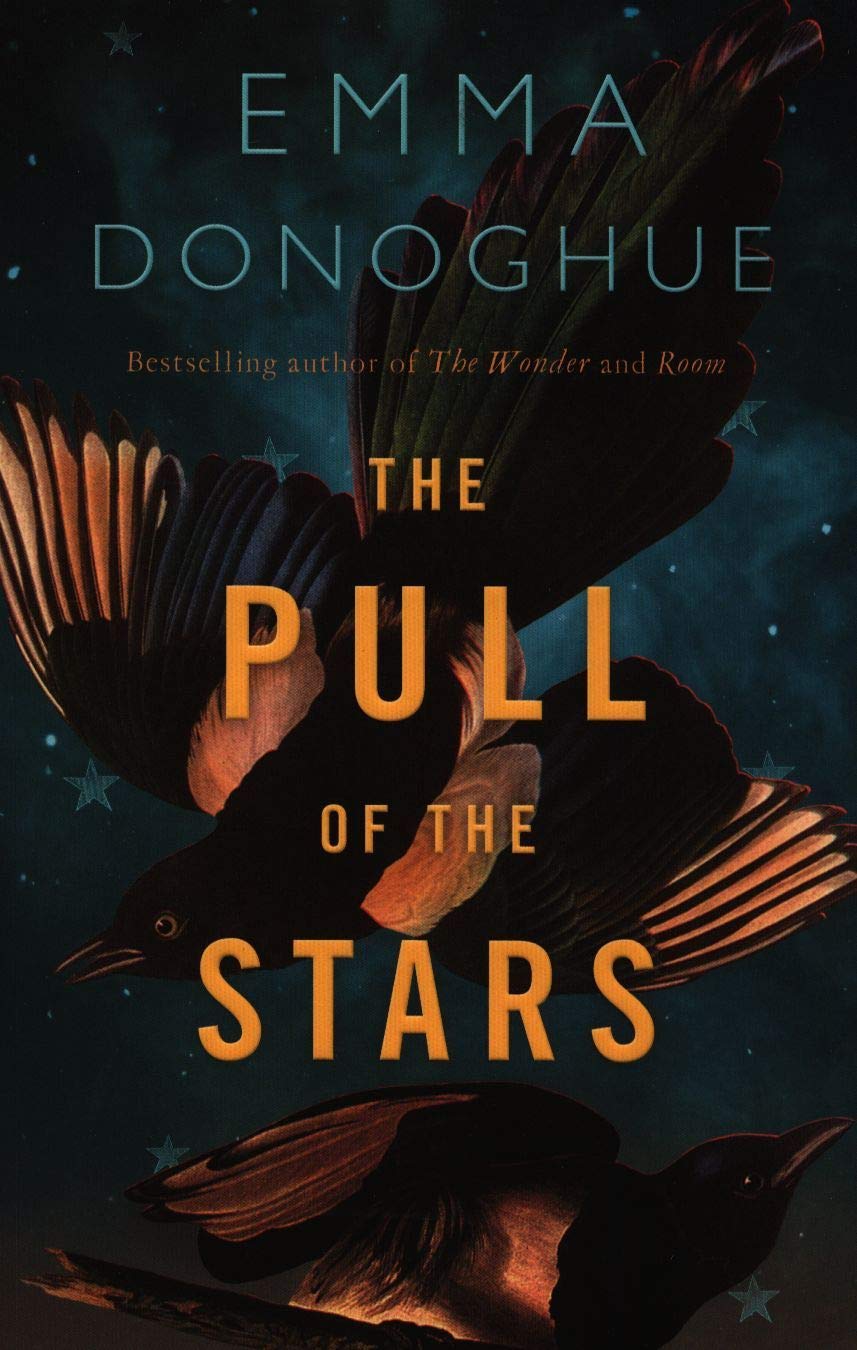
The Pull of the Stars, By Emma Donoghue, Picador, pp. 256, Rs 599
Donoghue invented the character of Bridie Sweeney, the helper, because she wanted somebody who might seem to have nothing to give; somebody who had been mistreated and impoverished and raised badly by the state, and yet has “natural supply of energy, curiosity and zest”. We could see her in the tradition of a plucky orphan who has a zest for life despite the fact that she is the product of an orphanage.
The triumph of the human endurance and the resilience of the human spirit have been at the core of many of Donoghue’s novels. People, caught in constricted spaces or catastrophic times or circumstances, get to have, in the end, illuminations of hope for survival or a sense of the future. It’s the same in The Pull of the Stars. “I always look for something to balance the terms when I am writing about something grim and miserable. For instance, the people in The Pull of the Stars get on and work very well together. They are mostly kind to each other; I don’t need to have them treat each other badly because the backdrop is so terrifying. I always look for hope to make reading the book worthwhile to my reader. I think if I am going to make my reader suffer, I have to compensate: I am not going to hurt them, I am going to heal them,” says Donoghue. However, she would not want all this to take away from the “political force” of the novel. Donoghue says: “There is a danger that if we write cute stories about suffering, it would be a way of saying that suffering is fine because the human spirit will survive.” She cites the example of films, like Slumdog Millionaire (2009), that have been heavily criticised for being cute and too optimistic about misery. “You don’t want to make the suffering of the many fun for the cinema-going audiences of some country,” adds Donoghue.
The lockdown in the wake of the pandemic has made Donoghue acutely aware of people’s suffering. In Toronto, like it has been in many other cities of the world, the lockdown has seen middle-class and upper-class people stay at home and stay connected via Zoom and Skype while poor people have been going to work. “They have kept catching Covid when rich people have been hiding away from it. It has been such a revelation of inequality in every country. Staying home — having food, income, enough space or clean water — is a privilege. People are dying right now because of the decisions of those we voted to power,” says Donoghue, who sometimes finds it hard to find a balance between making her books enjoyable artistic experience and telling the truth.
“The truth sometimes is not cheerful at all. Some of my readers might think that this novel is too grim and depressing, but I didn’t want to write about a pandemic and sound like everything is fine at the end,” she says. She feels the pandemic is making us look at our societies from the outside and see its major flaws as well as the huge work in human solidarity. Writers, she says, are going to draw on the strangeness and the uncertainties of these times.
The four chapters in the novel are named after colours: Red, Brown, Blue and Black. “I was looking for ways to make the flu very vivid,” says Donoghue. While researching, she read books that were full of statistics and analysis about the medicine and the politics. While writing the novel, she was looking for “tiny ways to make it come alive in the senses”. Early on, she picked on the names given to the flu: blue flu, khaki flu, black flu. “I realised that some of them were based on the idea of the lack of oxygen in the tissue changing people’s colours. I thought that it could stand like a sort of an early warning system — colour-coded warning systems. Like an amber light. I liked the idea to start with the names of colours which, at first, would mean nothing to the reader and then they would gradually realise that it’s always a hint of heading into danger and death,” she says, adding that she likes when the readers have to work a little bit to puzzle things out. Donoghue, however, doesn’t like to leave the readers “completely confused” at the end. “I can’t stand when a literary writer does a moment of mystery and in the end doesn’t tell you who committed the murder. I’d feel cheated. I would like readers to know what happened, but I want them to work a little bit,” she says.
Colours, incidentally, have been a defining element of the red-haired, blue-eyed author’s persona. Writing about herself on her website, she asserts that she wears bright colours “to make up for the pale face.” During the lockdown, as Donoghue stayed at her old yellow-brick house in London, the Canadian city in southwestern Ontario, along with her wife, Christine Roulston, a professor of French and Women's Studies at Western University, and their two children — Finn, 16, and Una, 13 — her novel about the heroic event of birth and the sordid saga of death during the pandemic went on to become a Number 1 bestseller in Canada and Ireland, besides making it to the bestsellers’ lists in the US (New York Times) and UK.
It may have helped The Pull of the Stars to top the charts since the readers around the world found parallels between the past and the present. But Donoghue is not the one to allow herself to be driven by the market forces. She has written many novels and has all of them published, unlike Emily Dickinson, her hero, who couldn’t care less about publishing and wrote poetry out of pure passion. She says she would be tempted to be doing what readers like. However, she refuses to be dictated by the demands of the market, unlike many authors who willingly succumb to its pressures.
Staying at her home, Donoghue has been surrounded with fireflies, birds and rabbits, besides her family. Sitting in her garden, she sees “little glowing lights” flying around: “I feel I have never seen them before. And now I am noticing them more because I am sitting in the garden all the time with friends.” At the back of her mind though, it is the pandemic. “I am worried especially since we are so closed to America, which seems to be falling into a state of chaos,” says the writer. It is during the pandemic, she says, that we really see our society “lit up by a flash of lightning” and feel “shame” about the situation we are allowed to build up.
More from The Byword
Comments
*Comments will be moderated




